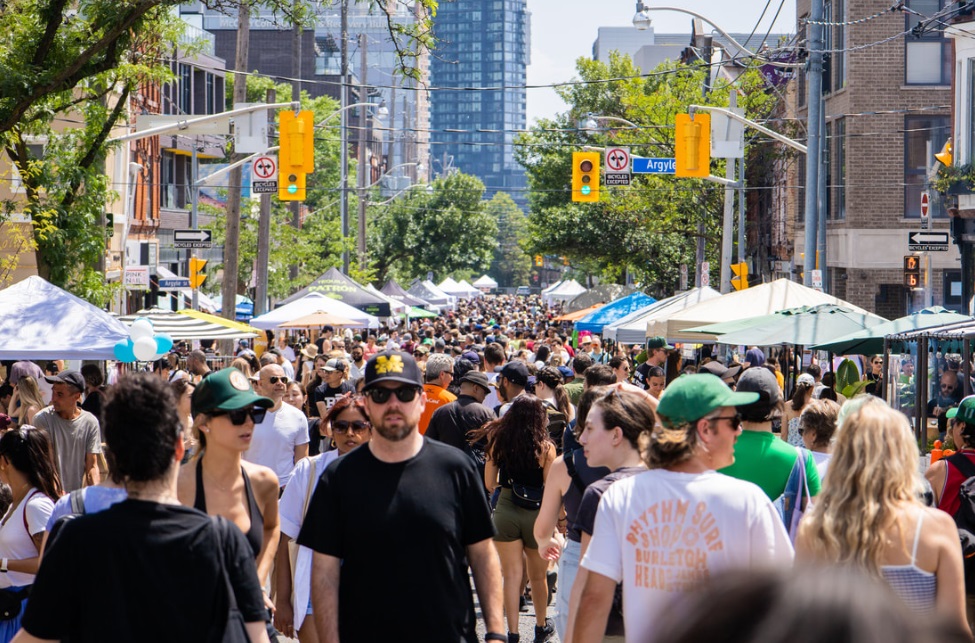TTC implements 14 slow-speed zones across subway Lines 1, 2 due to track issues
Posted February 15, 2024 9:07 pm.
Last Updated March 12, 2024 12:17 pm.
For TTC subway riders who rely on Lines 1 and 2, the commute over the past couple of weeks has indeed been longer due to infrastructure-related issues.
“It’s so frustrating. It’s actually been weeks that the trains have been going slower. I live right near a slow zone and I’ve been late so many times,” Shelagh Pizey-Allen, the executive director of the advocacy group TTCriders, said on Thursday.
“Riders are very frustrated. Honestly … alarm bells are ringing. Why are there so many sections of the TTC track [under] slow orders?”
TTC staff recently announced that they implemented more than a dozen reduced-speed zones across the network after identifying unspecified track infrastructure maintenance issues.
Messages posted on the TTC service alerts X account said there are longer-than-normal travel times. For example, staff said trips could be up to five minutes longer between Union and Finch stations and between Kipling and St. George stations.
As of Feb. 15, there were slow-speed orders in parts of the following areas on Line 1 Yonge-University:
- Both directions between College and Wellesley stations
- Both directions between Spadina and St. George stations
- Northbound between Highway 407 and Vaughan Metropolitan Centre stations
- Northbound between Union and King stations
- Northbound between Bloor and Rosedale stations
- Northbound between Summerhill and Davisville stations
- Northbound between Lawrence and Sheppard-Yonge stations
- Northbound between North York Centre and Finch stations
- Southbound between St. Andrew and Union stations
- Southbound between Davisville and St. Clair stations
Here are the slow-speed orders for Line 2 Bloor-Danforth:
- Both directions between Royal York and Jane stations
- Westbound between Lansdowne and Dundas West stations
- Eastbound between Castle Frank and Chester stations
- Eastbound between Victoria Park and Warden stations
For commuters who need to transfer to connecting buses, streetcars and subway trains, Pizey-Allen said delays can make travel times worse.
“If you’re taking a long trip, your trip is going to get significantly longer, but also you have to plan ahead, leave the house earlier to get to work or school and you might miss your connecting trip,” she said.
“Sometimes it’s just crawling along the tracks and you never know.”
CityNews went along Line 1 on Thursday to see first-hand how travel times were impacted. At around lunchtime, a train travelling south to Bloor from Rosedale reached a speed of around 42 km/h. However, minutes later a train travelling north to Rosedale from Bloor — one of the identified slow-speed zones — the top speed reached approximately 11 km/h.
Bruce Macgregor, the deputy CEO of the TTC, confirmed to CityNews the precautions have been in place since an annual geometrical survey of the subway system’s tracks identified multiple issues at the end of January.
“There were a number of places on our system that needed repair, needed attention,” he said.
“The first thing we do is in an abundance of caution and … with safety at the top of our list, we reduce speeds while we assess the extent of the repairs.”
It was also noted by staff that visual track inspections are carried out every 72 hours.
In an update released Thursday afternoon, Macgregor said two-thirds of the distance with speed restrictions was set to be cleared by the end of the day. Trains would be allowed to return to full speed in those segments.
CityNews asked about the high number of reduced-speed zones that came into place suddenly and if the TTC has adequate equipment and staffing to address all the issues promptly.
“This is our business and the nature of our businesses to be doing this around the clock year-round. So we do have the parts and the people on hand to do this,” Macgregor said.
“We apologize for the delay that they’ve experienced and assure [passengers] that we’re on it.”
As for the remaining tracks impacted, Macgregor said those zones will see slow train travel until sometime in March.
Meanwhile, Pizey-Allen called for greater transparency when it comes to the disclosure of the issues that were flagged. She pointed to concerns raised in a consultant’s report after the derailment of a Line 3 Scarborough RT train in 2023 about track management and ensuring there were enough staff resources.
As of Thursday, TTC staff didn’t provide a detailed breakdown of what exactly led to each of the reduced-speed zones.
Pizey-Allen also said there should be stronger messaging about the issues. During a survey of the TTC’s online information platforms, there were messages included in the transit agency’s X feed. There’s also the reduced-speed zones page on the TTC’s website, but there wasn’t anything pointed out on the homepage or under the real-time service alerts. A spokesperson later added information about the slow orders was included in two weekly email newsletters.
“If there needs to be slow orders for safety, of course, we support that,” she said.
“But we expect communication about when these slow orders will be lifted and also what’s the story behind them? Are there safety concerns? Are there state-of-good-repair issues?”








